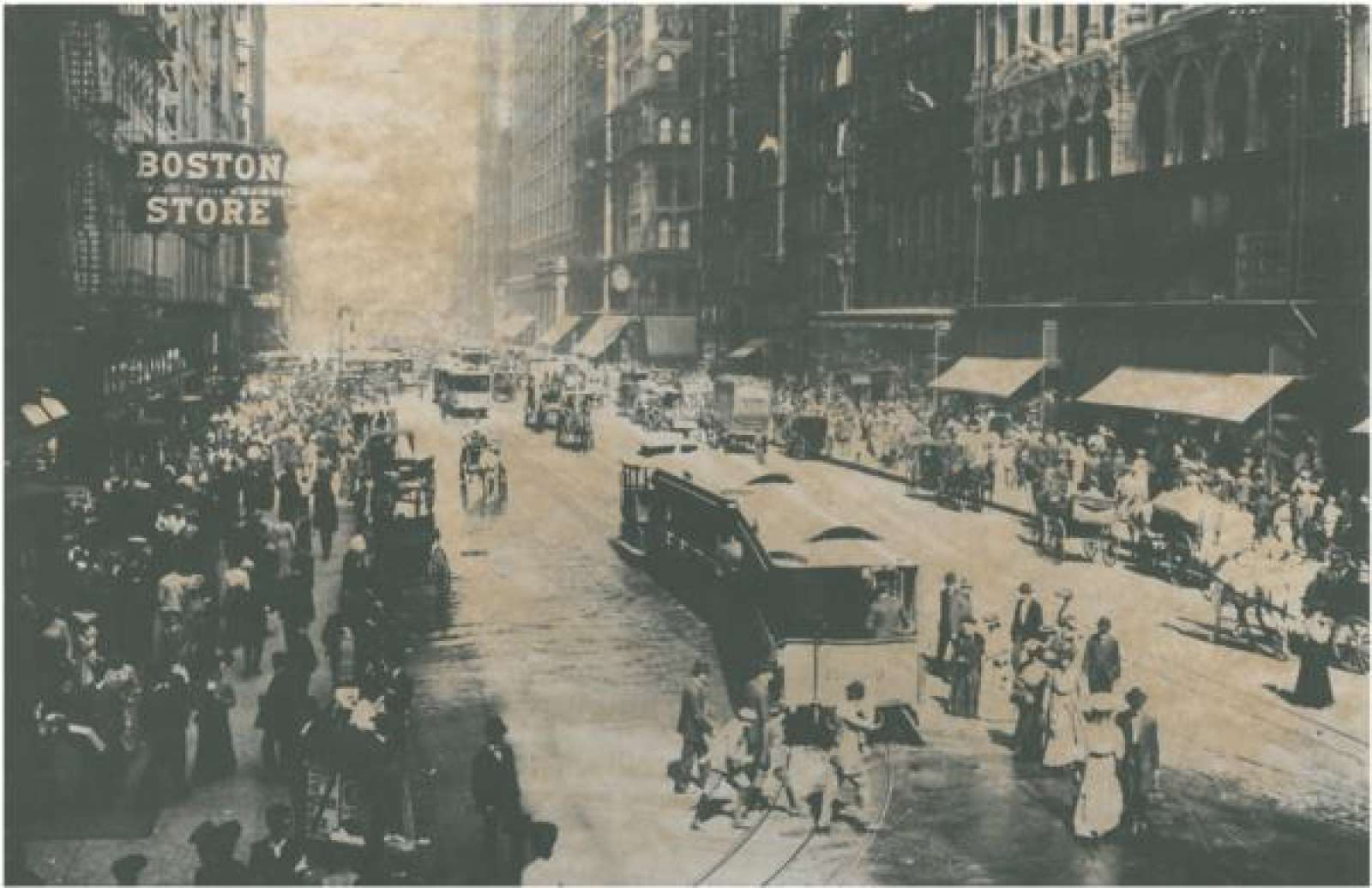Posted 13 years ago in Then and Now by Taylor Linhart
In today’s photographic comparison, we’re recapturing the historical journey of the heart of Chicago—State and Madison. From behemoth department stores to ever-evolving public transit, Chicago’s zero-zero point tells a story of the history of the city. The ever-evolving State Street continues to grow with the years, and these two photos are evidence of that. Thirty three years after the Great Chicago Fire and a decade before World War I, State Street's rapid development and expansion are apparent. Today, the thriving Great Street remains an industry leader, cultural and institutional mecca, and of course, a retail hot spot.
Then, 1904
- 1904 was the year Edward Paul Brennan suggested State and Madison Streets as the dividing line on which his numbering system should be based, marking the intersection "zero, zero." The City Council of Chicago accepted and passed his request in 1908.
- This picture was taken four years before electric trolley.
- The 1904 National Convention of the Republican Party was held in the Chicago Coliseum from June 21 to June 23, where President Theodore Roosevelt was nominated with 994 votes.
- Three years earlier, Chicago celebrated the renaming of Grant Park, formerly known as Lake Park.

Now, 2012
Since 1904, the cycle of invention, renovation, expansion, and development on State Street has been endless. Some of the evolutions that may be taken for granted: modern plumbing and electrical above and below ground, sustainable glass in high rises, light posts, advertising, planters, bus shelters (and diesel and hybrid buses for that matter), traffic lights, concrete sidewalks, sidewalk cleaning, and trees, to name a few.
- The Boston Store in the 1904 photo dates back to 1873, when Charles Netcher opened a dry goods emporium in a small 5-story building on the site. While the store closed in 1948, an original Boston Store advertisement can still be seen above Hotel Burnham on the face of the building’s former mechanical tower.
- There have been 15 evolutions of public bus transportation, from the 1859 horse drawn carriage that held 2 passengers to the current New Flyer of America hybrid bus, which can hold 50-55 passengers.
- The Great Clock of the Marshall Field building, which is vaguely visible in the 1904 photo, was installed in 1897. Marshall Field envisioned the now-iconic symbol of Chicago as, “a beacon that could be seen for miles and attracts crowds to his store.”
